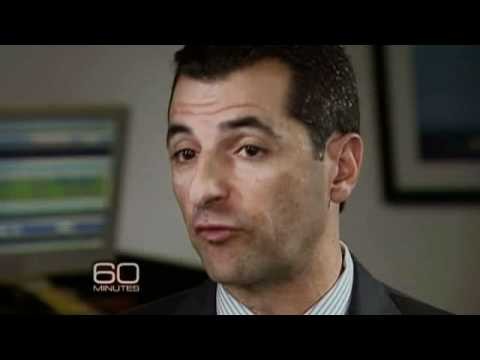How Speed Traders Are Changing Wall Street CBS News
Post on: 16 Март, 2015 No Comment

It may surprise you to learn that most of the stock trades in the U.S. are no longer being made by human beings, but by robot computers capable of buying and selling thousands of different securities in the time it takes you to blink an eye.
These supercomputers — which actually decide which stocks to buy and sell — are operating on highly secret instructions programmed into them by math wizards who may or may not know anything about the value of the companies that are being traded.
It’s known as high frequency trading, a phenomenon that’s swept over much of Wall Street in the past few years and played a supporting role in the mini market crash last spring that saw the Dow Jones Industrial Average plunge 600 points in 15 minutes.
Most people outside of the industry know very little, if anything, about it. But the Securities and Exchange Commission and members of Congress have begun asking some tough questions about its usefulness, potential dangers, and suspicions that some people may be using computers to manipulate the market.
In a secret new building in New Jersey, high-speed computers decide which stocks to buy and sell. Could this kind of automated trading floor lead to Wall Street’s next flash crash?
Extra: How High Frequency Trading Grew
Extra: Computers Better Than Humans?
Extra: Speed Traders Helping Small Investors?
For 150 years, the floor of the New York Stock Exchange was the center of the financial world, the economic engine that helped American business raise capital and create jobs.
Today it is still the public faade of Wall Street, and a television backdrop for reporters relaying financial news. But less than 30 percent of the trading is conducted there now, and the specialists and the noise of the floor is being replaced by the speed and quiet efficiency of computers, and the action has moved elsewhere.
There are now more than 80 alternative trading systems around the country, plus two brand new electronic stock exchanges which most of you have probably never heard of: BATS and Direct Edge.
They’re owned by the big banks and by high frequency trading firms, and neither of them would give 60 Minutes an interview or let us inside to film their operations, but they trade more than a billion shares a day at blinding speed, and most of those bets are being made by machines.
The players range from firms like Goldman Sachs, Barclays, Credit-Suisse and Morgan Stanley to hedge funds and smaller operations like Tradeworx, which is the only high frequency trading firm that would talk to us or let us in.
It’s run by Manoj Narang and a small group of mathematicians and scientists called quants, which is short for quantitative analysts. Their high speed computers trade 40 million shares every day.
Asked if humans are ever involved in the trading, Narang told correspondent Steve Kroft. Humans are not involved in the trading because humans are way too slow to trade on the kinds of opportunities that we’re trying to capture. We’re trying to capture opportunities that exist for only fractions of a second.
The Tradeworx computers don’t care where a stock is going to be trading next year, next month, next week or even tomorrow, because they are going to be in and out of it on the same day, in a matter of minutes.
What’s the point of buying and selling a stock that you hold for three minutes? Kroft asked.
Same objective that all other participants have in the market, is to make money. You buy low, sell high, that’s how you make money, Narang said.
And the computer will know when to buy and when to sell? Kroft asked.
Sure, the computer is monitoring real-time data and it knows what to do with that data and how to make decisions based on that, Narang replied.
What Narang and other high frequency traders tell their computers to do is to make a profit of a penny or less, 40 million times day.
They scan the different exchanges, trying to anticipate which direction individual stocks are likely to move in the next fraction of a second based on current market conditions and statistical analysis of past performance. But the computers have no real understanding of who these companies are and what they do.














